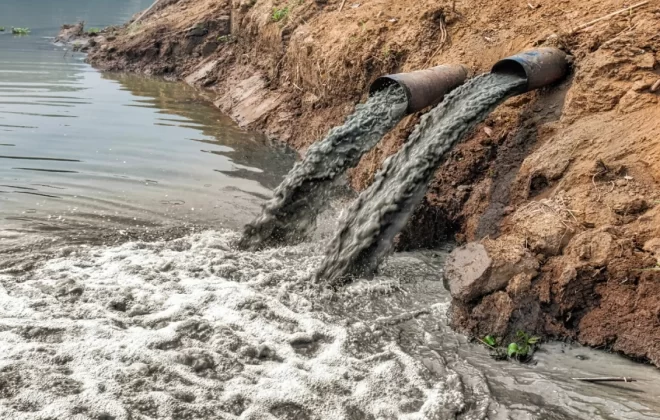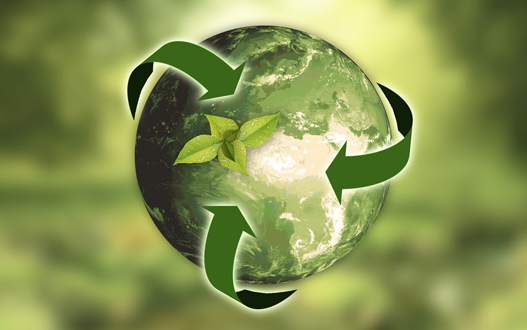The Environmental Impact of Dry Waste and Wet Waste
Are you passionate about the environment and curious to learn about how your daily waste consumption impacts it? Look no further than this blog post on the environmental impact of dry waste and wet waste. From plastic packaging to food scraps, we’ll explore how these different types of waste affect our planet in unique ways. Join us as we dive into this important topic and discover simple changes you can make to reduce your own ecological footprint.
Introduction to Dry and Wet Waste
Dry waste is waste that doesn’t contain moisture, such as paper and cardboard. It’s often recycled or incinerated. Wet waste is waste that contains moisture, such as food scraps and sewage. It’s often composted or sent to landfill.
The environmental impact of dry waste is lower than the environmental impact of wet waste. Dry waste can be recycled or incinerated, which reduces the amount of waste that goes to landfill. Wet waste, on the other hand, must be either composted or sent to landfill. When wet waste decomposes in landfill, it produces methane, a greenhouse gas that contributes to climate change.
The best way to reduce the environmental impact of dry and wet waste is to reduce the amount of waste we produce in the first place. We can do this by recycling more and wasting less.
Different Types of Dry and Wet Waste
There are two types of waste: dry and wet. Dry waste includes things like paper, cardboard, plastics, metal, glass, and textiles. Wet waste includes food scraps, yard trimmings, and sewage. Each type of waste has different environmental impacts.
Dry waste makes up the majority of the municipal solid waste in the United States. It is usually recycled or incinerated. Recycling dry waste keeps it out of landfills where it would decompose and release methane, a potent greenhouse gas. Incinerating dry waste also releases greenhouse gases but generates electricity that can be used to power homes and businesses.
Wet waste makes up a smaller percentage of municipal solid waste but is more difficult to manage because it decomposes rapidly and produces methane gas. The best way to reduce the environmental impact of wet waste is to compost it. Composting turns wet waste into a valuable resource that can be used to improve soil health and grow plants.
Effects of Dry and Wet Waste on the Environment
Dry waste includes things like paper, cardboard, plastic, metal, and glass. When these materials are disposed of in landfills, they take up valuable space and release methane gas, which is a powerful greenhouse gas. Wet waste includes food scraps, yard waste, and sewage. This type of waste decomposes and produces methane gas as well.
The environmental impact of dry waste and wet waste can be significant. Landfills are the third-largest source of human-generated methane emissions in the United States. Methane is a greenhouse gas that is more than 20 times more potent than carbon dioxide at trapping heat in the atmosphere over a 100-year period.
When organic materials like food scraps and yard waste decompose in landfills, they produce methane gas. Methane is a powerful greenhouse gas that contributes to climate change. The U.S. Environmental Protection Agency estimates that methane emissions from landfills account for about 10 percent of all human-caused methane emissions in the United States.
To reduce the environmental impact of dry and wet waste, we can recycle or compost these materials instead of sending them to landfills. Recycling and composting divert waste from landfills and prevent it from decomposing and producing methane gas.
Solutions to Reduce Dry and Wet Wastes
One of the best ways to reduce your environmental impact is to reduce the amount of waste you produce in the first place. That means thinking about what you buy and whether you really need it, and making an effort to reuse or recycle items instead of throwing them away.
When it comes to dry waste, there are a few simple solutions that can make a big difference. For example, using recycled paper products instead of virgin paper saves trees and energy, and recycling aluminum cans instead of tossing them in the trash reduces mining pollution. You can also compost your food scraps instead of sending them to the landfill, which reduces methane emissions and helps create nutrient-rich soil for your garden.
When it comes to wet waste, the best solution is often simply to use less water. That means fixing leaks, watering your plants during the cooler hours of the day, and investing in efficient fixtures like low-flow toilets and showerheads. You can also collect rainwater to use for watering plants or washing your car. And when it comes time to do laundry, choose cold water whenever possible – it uses less energy than hot water does.
Recycling Options for Dry and Wet Wastes
Dry waste includes items such as paper, cardboard, plastic, metal, and glass. Wet waste includes items such as food scraps, yard trimmings, and sewage. Both types of waste can be recycled to reduce the environmental impact of waste disposal.
Recycling dry waste is a simple process. Most dry waste can be recycled at your local recycling center. To recycle paper and cardboard, simply place them in the appropriate bin at your recycling center. To recycle plastic and metal, you may need to sort them into different bins. Glass can usually be placed in the same bin as paper and cardboard.
Wet waste is more difficult to recycle because it can’t be sorted as easily. However, many communities have programs that allow residents to compost their wet waste. Composting wet waste reduces its volume by up to 90%, making it much easier to recycle or dispose of safely.
You can also reduce the environmental impact of dry and wet wastes by reducing your consumption of products that generate these wastes. For example, you can buy recycled paper products and avoid using disposable plastics whenever possible.
Conclusion
In conclusion, dry waste and wet waste have a large environmental impact due to the amount of resources required for their disposal. Dry waste deposition is more energy efficient than wet waste, but has its own consequences such as filling up landfills and producing toxic substances in the air. Wet wastes require more energy and water to process, which can also cause pollution problems. We need to be aware of both types of wastes and work towards reducing them in order to protect our planet’s environment.





